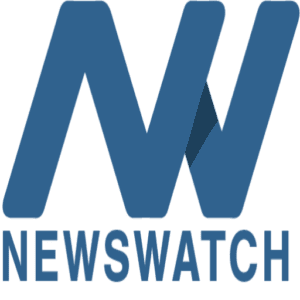In the tax preparation industry, time is money, deadlines are not a choice, and disorganization is not a choice. Ironically, disorganization can cost the average employee 9.3 hours a week or more than five weeks of lost productivity per year. Such losses aren’t acceptable for tax professionals whose deadlines are not negotiable and whose accuracy has to be perfect.
Using good organizational tools streamlines procedures and enhances client satisfaction and compliance. Apart from efficiency, an organized system reduces stress, prevents expensive errors, and enables tax professionals to focus on delivering excellent service to clients. Below are five essential tools designed to enhance the efficiency of tax professionals.
1. Tax Return Envelopes
Even with the digitalization of most processes, paper documents continue to be the norm in tax preparation. Using professional-looking tax return envelopes for tax professionals helps greatly improve organization and client communication. Envelopes personalized with branding and contact information solidify professionalism, leaving a lasting impression on clients.
Alternate envelope color or design can enable differentiation within the various types of returns or customer segments. For example, color-coded envelopes for various service levels, i.e., standard, expedited, or audit-related returns, make for an easy workflow.
Using tamper-evident seals to secure envelopes protects confidential information while in transit, reducing identity theft or document loss. Tax preparers also include return labels and instruction pages in envelopes for most clients to facilitate their understanding of subsequent steps after receiving their tax returns.
The advantages of using tax return envelopes are presenting documents professionally and organized, convenient sorting and mailing of paper documents, and providing added security to confidential client information. Moreover, secure packaging helps tax professionals comply with document retention and privacy regulations.
2. Secure Digital Filing Systems
Transitioning from paper files to secure electronic filing systems is a time-saver for tax professionals. The systems offer centralized storage, rapid retrieval, and enhanced security for confidential client information. Having a standard folder structure is essential. For instance, creating a top-level directory for each client, with subdirectories for each tax year and document type, such as income statements and expense receipts, keeps things simple.
Timely uploading of documents maintains up-to-date records, avoiding last-minute rushes during tax season. In addition, electronic filing systems are integrated with other tax preparation software, allowing data sharing between platforms.
Firm access controls prevent unauthorized individuals from viewing or modifying sensitive information. Cloud services provide encrypted storage and automated backup, minimizing the risk of losing data.
3. Comprehensive Checklists
Utilizing in-depth checklists eliminates overlooking any essential activity or record in tax preparation. Applying standard templates on common tax preparation activities and required documents ensures consistency. Customizing checklists according to the particular needs of clients considering particular financial conditions or special industry requirements enhances effectiveness.
For instance, tax professionals with small business clients would have specific checklist items for payroll taxes and deductions. In contrast, professionals who work with high-net-worth clients would have estate planning items. Keeping checklists current based on tax law and regulation modifications is very important.
Cloud-based checklist programs provide instant updates so members can always view the most recent version. The advantages of well-completed checklists include minimizing error with a transparent plan, holding members accountable by assigning responsibility to each step, and informing clients about documents needed, fostering openness and credibility. They also serve as an orientation manual for new employees, allowing them to pick up on workflow and best practices efficiently.
4. Collaboration Tools
Collaborating with Certified Public Accountants (CPAs) or Certified Financial Planners (CFPs) can result in useful tax planning and compliance advice and solutions. A robust network of tax professionals to advise on tricky issues increases the strength of a firm’s proficiency. Coordination extends beyond tax planning; professionals can coordinate during audits, financial projections, and investing, providing clients with overall financial solutions.
The arrangement of regular consultation visits facilitates consistent discussions about tax planning, rule amendments, and optimal practices. Workshop and seminar attendance offers specialists news about emerging developments in the law.
The benefits of using tax-intelligent experts are that an individual receives access to specialized know-how that enhances service quality, finds tax-saving opportunities prior to when they become emergencies, and minimizes errors and penalties with expert control. Referrals and business development due to networking with experts in the field also expand chances for tax experts.
5. Task and Project Management Tools
Working with several clients and deadlines requires solid task and project management capabilities. Describing and delegating work to team members with realistic time frames increases efficiency. Tax professionals usually use cloud-based project management capabilities, allowing them to prioritize, delegate work, and track in real time.
Utilizing dashboards to monitor the status of several projects enables potential bottlenecks to be resolved before they become significant issues. Maintaining clients’ awareness and engagement with progress reports ensures they stay interested and that trust and transparency are preserved.
Automated task capabilities, such as automatic reminders of impending deadlines, prevent missed filings and fines. Furthermore, integration of tax-specific workflow automation tools can reduce the time spent on repetitive routine tasks, allowing professionals to focus on high-value services.
Conclusion
As tax legislation and client demands continue to change, staying one step ahead with good organizational tools helps tax professionals thrive in the long term. Whether you work for a small firm or a big firm, these tools can assist you in streamlining workflows, minimizing risk, and establishing yourself as a source of precision and dependability. By adopting best practices in the organization in advance, tax professionals can stand out in a competitive market and have a smooth, trouble-free process for themselves and their clients.
